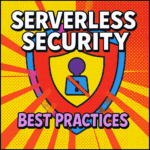For startups, scalability is paramount. The ability to rapidly adapt to fluctuating user demand and growth is crucial for survival and success. Traditional server-based architectures often struggle to meet these demands efficiently, leading to costly infrastructure overheads and performance bottlenecks. Serverless architectures, however, offer a compelling alternative. By abstracting away server management, they enable startups to focus on building their core product while automatically scaling resources based on real-time needs. This article will explore key strategies for optimizing serverless architectures to maximize scalability for startups, covering crucial aspects from function optimization to efficient resource management and meticulous monitoring.
Function Optimization for Peak Performance
At the heart of any serverless architecture lies the individual function. Optimizing these functions is crucial for maximizing scalability and minimizing costs. This includes writing efficient code, minimizing dependencies, and leveraging asynchronous operations wherever possible. Smaller, focused functions generally perform better than monolithic ones. Consider using techniques like code splitting to break down large functions into smaller, more manageable units. Employing server-side caching strategies, such as Redis, can dramatically reduce the latency of frequently accessed data. Furthermore, carefully choosing the right runtime environment, optimized for your specific programming language and workload, is essential for performance gains.
Database Optimization and Choice
Database selection is a critical decision. For startups, scalability considerations heavily influence this choice. Relational databases like PostgreSQL or MySQL might be suitable for initial stages, but as data volume increases, they can become bottlenecks. NoSQL databases like DynamoDB or MongoDB offer better horizontal scalability, allowing for seamless handling of rapidly growing datasets. Proper database indexing is vital; efficient indexing accelerates query performance. Consider implementing techniques like sharding to distribute the data across multiple servers, which massively improves query speed. Regular database tuning and performance monitoring are also essential.
Efficient Resource Management and Cost Control
Serverless architectures inherently offer cost benefits, but improper resource management can negate these advantages. Careful monitoring of resource usage is essential. Track invocation counts, execution times, and memory consumption. Identify and optimize functions exhibiting high resource consumption. Leverage features like concurrency limits to control the number of parallel executions, avoiding unnecessary resource usage. Implement proactive scaling strategies, such as autoscaling based on metrics like request rate or queue length. This ensures that the resources always match the demand and cost is only incurred when needed. Regular review of pricing plans from your cloud provider is also critical.
Monitoring and Observability
Comprehensive monitoring and observability are indispensable for ensuring the scalability and reliability of a serverless architecture. Real-time monitoring of key metrics such as function execution times, error rates, and resource usage is paramount. Tools like CloudWatch, Datadog, or New Relic offer powerful monitoring capabilities, providing insights into performance bottlenecks and potential issues. Implementing robust logging practices helps track down errors and diagnose performance issues. Automated alerts based on predefined thresholds, like high error rates or slow execution times, allow for proactive intervention before issues significantly impact users. Observability allows for identifying and resolving problems rapidly.
| Aspect | Optimization Strategy |
|---|---|
| Function Code | Efficient algorithms, minimal dependencies, asynchronous operations |
| Database | Appropriate choice (SQL vs. NoSQL), indexing, sharding |
| Resource Management | Autoscaling, concurrency limits, cost monitoring |
| Monitoring | Real-time metrics, logging, automated alerts |
In conclusion, optimizing serverless architectures for startup scalability requires a multifaceted approach. Efficient function design, informed database selection, and shrewd resource management are fundamental building blocks. Equally important is a robust monitoring and observability strategy for proactive identification and resolution of performance issues. By focusing on these key areas, startups can leverage the inherent scalability of serverless architectures to achieve rapid growth without being hindered by infrastructure limitations. Remember that continuous monitoring, adaptation, and optimization are crucial for long-term success. Regularly reviewing performance data and adapting your strategy based on real-world usage is essential to ensure that your serverless architecture continues to meet the evolving needs of your growing business.
References
Image By: Black Forest Labs






